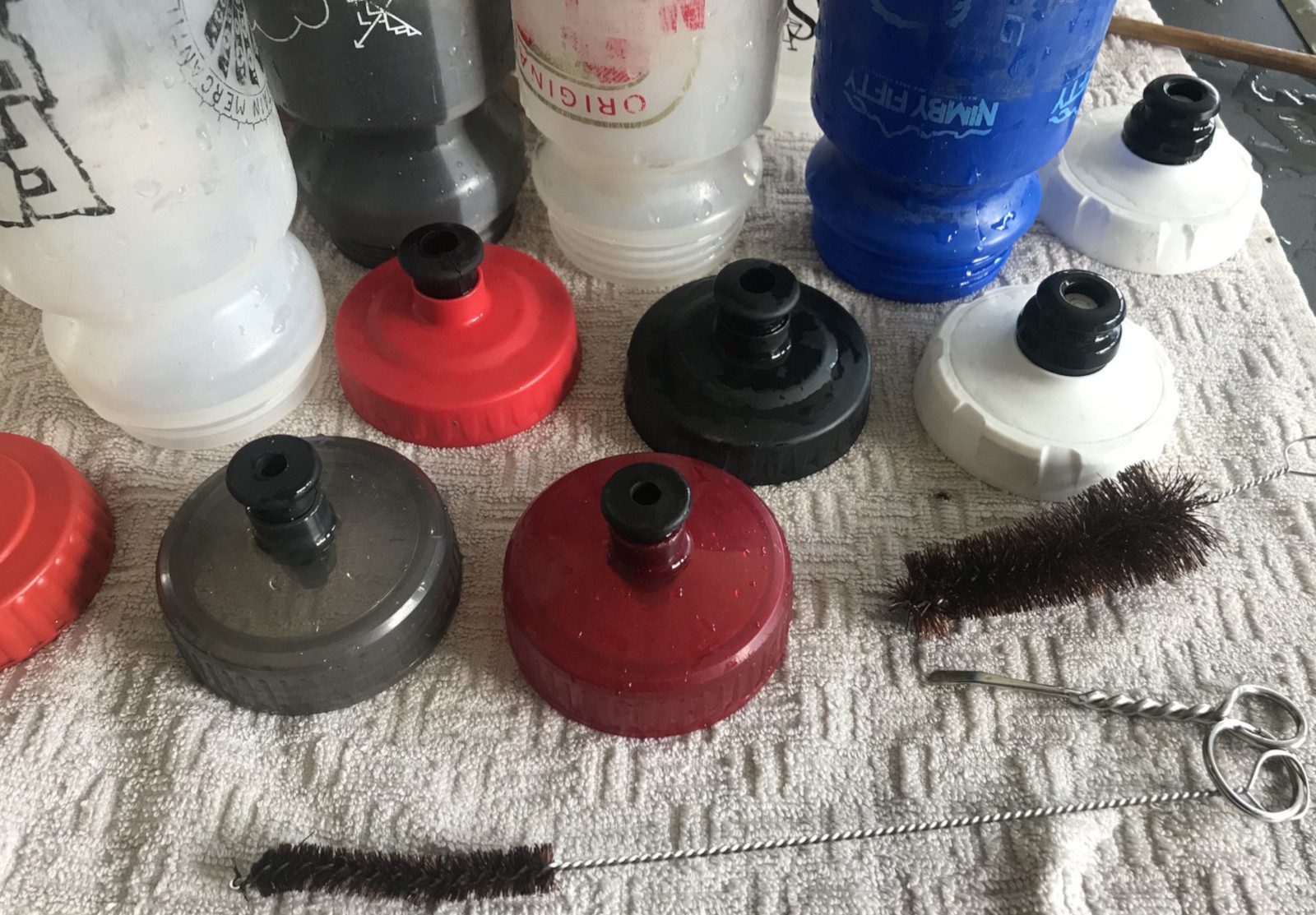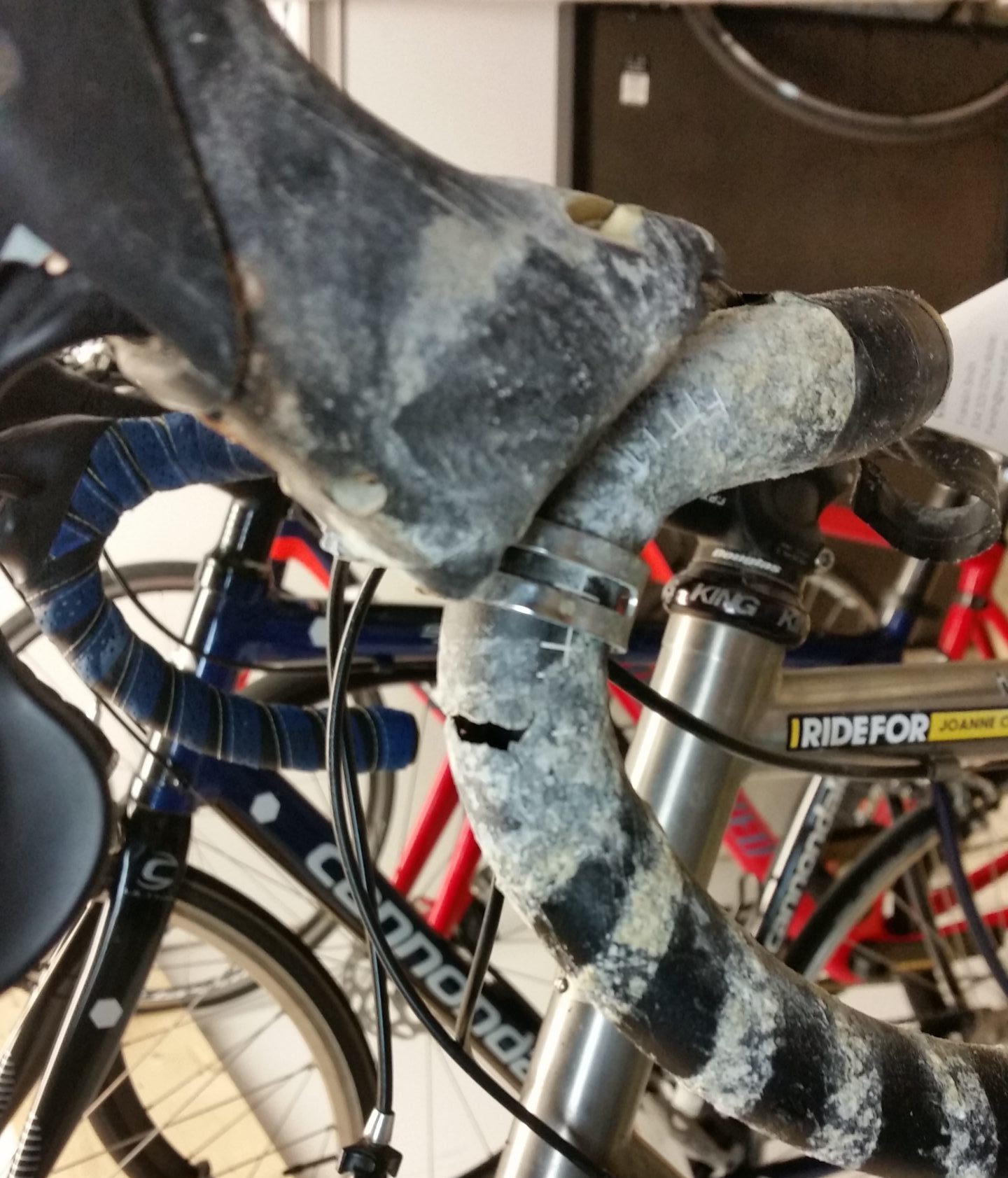5 bike items you’re probably not cleaning enough
It’s easy to forget

Being a cyclist involves routines. Setting your alarm, having your coffee, pumping your tires, putting on your kit, you know the drill.
And then when you get home, tired and sweaty, you take your shower, toss your kit in the laundry and make some grub. Doesn’t matter if you’re riding inside or outside, we all follow these steps. Of course you always remember to keep your kit clean, but sometimes we forget that some of the other items we use every day get just as much sweat and dirt as our shorts and jersey. Here’s a few things that might be overlooked after your ride.
1. Water bottles
Have you ever pulled your favourite water bottle off your bike, or out from under a car seat, opened it, and been greeted by an off-putting waft of stale air? Or even worse, looked down in the bottle to see some kind of nasty scum?

Warm weather (or a heated trainer room) and sugary drink mixes can quickly transform your water bottle into a greenhouse for all sorts of things you don’t want to ingest on your next ride. It’s good practice to Rinse after every ride. This is by far the easiest and most effective way to clean your water bottle and make sure it stays clean. Never give it the chance to get dirty. Rinsing all your bottles the minute you get home from a ride takes so little time that it is easy to make part of your post-ride routine. If you let it go to long, here’s a guide to getting the grossest gunk out of your favourite bidon.
2. Your (indoor) bike and trainer.
A good, sweaty trainer ride will give you a great sense of satisfaction. You worked hard, you’re dripping sweat but you made it to the end of your workout.
Indoor workouts always leave you more salty and drenched than outdoor rides, as there’s no wind to wick away perspiration. Although the sweat seems like the harmless badge of a hard ride, it can be highly corrosive and may cause massive damage to your bike if you’re not careful. Same goes for the trainer. Every 3,000 km, it’s not a bad idea to clean and re-grease the freehub as well as the spacers under the freehub body.
Many indoor cyclists cover their top tube, headset and handlebars in a towel to keep them dry. Another option to prevent damage is a “sweat net” or “sweat guard,” a product specifically designed to cover your top tube area. The sweat net can also help catch perspiration that would fly onto other areas of the bike, and often has additional bonus phone storage.
3. Arm and leg warmers
Sure, when you have a sweaty jersey and shorts you’re going to reflexively toss it in the wash. But the leg and arm warmers? You might just toss them aside for tomorrow. Or maybe tomorrow you don’t even need them.
But sweaty fabric can get gross, fast, and bacteria can have a party there. Just remember, you’re working out in the arm and leg warmers just as hard as you are in your base layer and jersey. Make sure to show them some love and a wash more often than you think.
4. Cap
You sweat a lot under your helmet. That hat you wear under can suck it up and wick it away, but it’s going to become yellower than the sun and smell like a hockey bag.
All it takes is a quick rinse with soap, to wash away some of that sweat. The hat will feel fresher and smell great. It’s no fun starting a ride with a musky cap.
5. Helmet pads
While on the topics of your head, think of all the sweat those pads absorb. It’s a good idea every once in a while to give them a clean. It’s pretty easy too, since you can just pop them off.
There are two options for cleaning helmet pads. Machine washing, or handwashing. For either one, most brands recommend using a cold-water wash, not hot. This helps prevent the edges of the pads from fraying or splitting.
When you hand wash, you should remember to fully rinse the soap out of the pads before drying them, or you’ll get a bubbly surprise on your first sweaty or rainy ride.
For less technical pads, machine washing is just fine. Put them in a mesh bag, and throw them in with other jerseys and kit. The bag lets the pads get clean while keeping them safe from damage from zippers, or any crevasses or edges in the washing machine. It also makes them much easier to find after if they’re not mixed in and amongst all your other clothes.
Dry the pads out, on low heat or hang dry. While they’re drying, you can clean any dirt out of the interior of the helmet with a clean cloth or brush. Then put the pads back in and you are ready to go!


